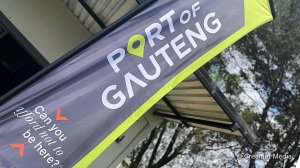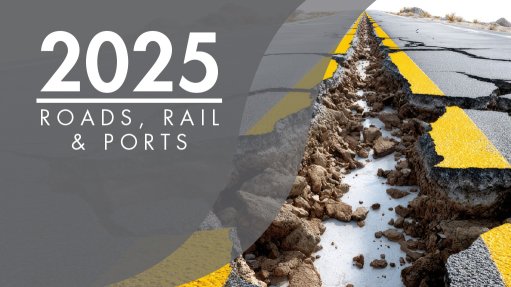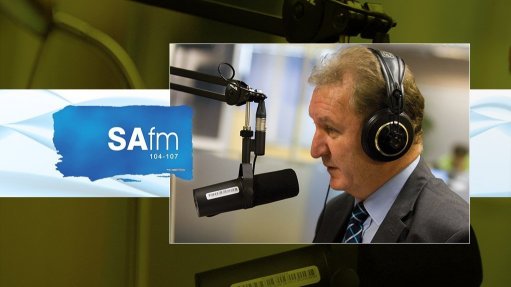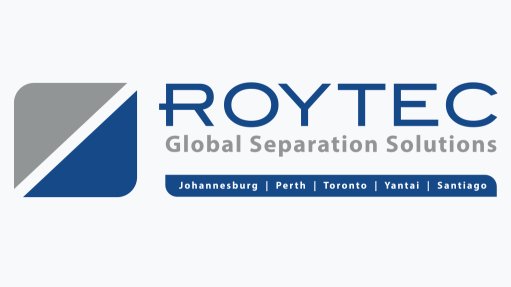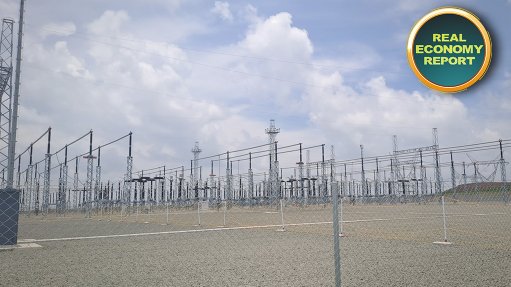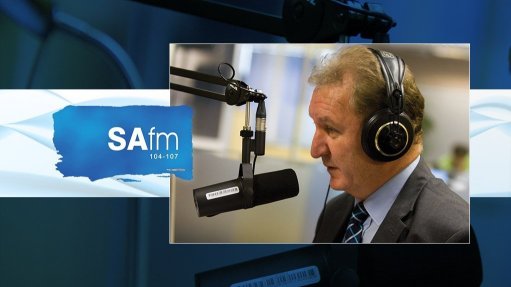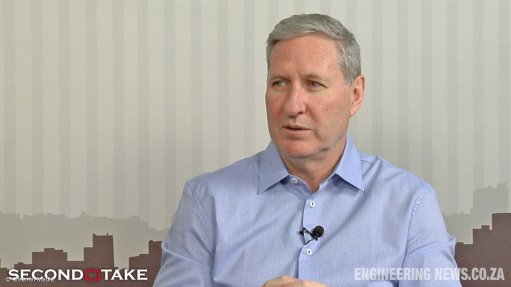Port of Gauteng unveils White Paper proposing inland port to ease Durban-Gauteng freight corridor strain

In this video, Port of Gauteng developer Francois Nortjé discusses the plans for the proposed logistics hub.
Private sector initiative the Port of Gauteng has released a White Paper to mark the start of Transport Month, setting out a plan aimed at addressing the inefficiencies in South Africa’s freight transport system and providing a response to the targets laid out in the National Development Plan (NDP) 2030.
The document, which was published on September 30, in Boksburg, Gauteng, outlines how the planned inland logistics hub could shift freight volumes from road to rail, relieve congestion on the Durban–Gauteng freight corridor and create what the developers claim will be more than 50 000 permanent jobs.
The Port of Gauteng is being developed by NT55 Investments, which owns substantial tracts of land designated for the project. This includes about 107 ha along the railway line, 80 ha along the N3 highway, 20 ha along Barry Marais road and a further 60 ha earmarked for future expansion.
The inland port is being proposed as a solution to mounting pressure on the national transport network, with rising volumes linked to the entry of e-commerce companies such as Shein, Temu and Amazon, along with the rapid increase in imported vehicles. As these companies expand, they are expected to move from air freight to container shipping, which would add to existing constraints on the corridor.
“We’re creating Africa’s most advanced inland trade gateway. This facility represents our commitment to solving South Africa’s freight crisis while generating massive economic returns. The 50 000 permanent jobs are just the beginning. We’re creating a platform for decades of sustainable growth,” Port of Gauteng developer Francois Nortjé said.
Nortjé, who heads up NT55 Investments, explained that the White Paper was prepared in response to South Africa’s freight transport challenges.
“Since the 2013 NDP set ambitious 2030 targets for shifting freight from road to rail, little progress has been made, and with just four years to go, the need for decisive action is urgent. As road congestion worsens and rail volumes decline, this paper outlines a practical solution, leveraging the Port of Gauteng’s R50-billion inland port to restore balance, reduce costs, and unlock long-term economic growth,” he said.
The inland port is to be developed at the junction of the Container Rail Corridor and the N3, N12 and N17 highways. Its planned infrastructure includes two 2.2-km flat rail alignments designed for efficient container handling.
The site will also include integrated solar power, rainwater harvesting and recycling systems.
In addition, facilities such as a car terminal and container terminal are planned, intended to allow for high-volume throughput and transfers between trains and trucks.
The White Paper highlights the limited role rail currently plays in the Durban-Gauteng freight corridor, moving less than 14% of freight volumes, well short of the 50% target set in the NDP.
The NDP identifies this corridor as a key focus area, calling for improved efficiency, increased capacity and greater sustainability. Developers of the Port of Gauteng argue that their project provides a means of making progress toward these goals.
The document also sets out the scale of financial and operational difficulties in the current system. It notes that Transnet recorded yearly losses of R1-billion on the corridor between 2014 and 2019, with losses escalating to R3-billion during the Covid-19 pandemic. At the same time, the number of daily trains fell from 80 to just 15 by 2023 and 2024.
“Port of Gauteng changes everything. It provides the missing link that makes rail competitive again. With purpose-built rail alignments and future three-hour turnaround times at the container and car terminals, we can finally deliver the reliability that shippers demand,” RailRunner South Africa CEO Mike Daniel said at the launch.
The White Paper also emphasises the role of performance-based standards (PBS) vehicles in the proposed model. These long truck and trailer combinations are able to carry two containers and, when used in conjunction with enhanced rail infrastructure, are projected to increase efficiency and reduce emissions.
The developers estimate that PBS vehicle integration could reduce truck traffic on the N3 by as much as one-third, improving safety along the corridor.
Heavy Vehicle Transport Technology Africa director Dr Paul Nordengen said the development’s approach would represent a major change for freight transport.
“Port of Gauteng’s integration of PBS vehicles represents the most significant advancement in heavy vehicle transport efficiency we’ve seen in decades, reducing truck movements by up to 40% and improving safety outcomes on our most critical trade corridor,” he said.
With container volumes expected to grow from 2.8-million to 11.2-million a year, the White Paper says that a combination of rail-ready infrastructure and PBS vehicle integration will be necessary for sustainable growth.
It further notes that the PBS pilot project is likely to be extended by three years to allow for additional research, after which a decision will be made on its potential adoption into legislation.
The White Paper emphasises that, if South Africa is to meet its NDP 2030 commitments, a decisive shift from road to rail, combined with the integration of PBS vehicles, will be required to establish a more efficient and sustainable freight transport system.
Nortjé said a development of this scale would require an investment of at least R50-billion, covering all infrastructure, including warehouses and truck stops.
He explained that while NT55 Investments owns 260 ha of the 1 400-ha site, much of the surrounding land consists of more than 100 properties that could be bought by other investors. Many of these plots, ranging in size from 2 ha to 10 ha, are owned by families looking to sell, including some who wish to move into retirement.
According to Nortjé, the project is structured as a fully compliant and investment-ready initiative that does not require government funding, but rather a supportive regulatory framework to proceed.
“Together, we can turn around the Durban-Gauteng freight corridor. We can do the KwaZulu-Natal tourism industry a favour and make the life better for everybody in Gauteng through a cheaper logistics road to Durban that is not a nightmare,” Nortjé said.
Article Enquiry
Email Article
Save Article
Feedback
To advertise email advertising@creamermedia.co.za or click here
Comments
Press Office
Announcements
What's On
Subscribe to improve your user experience...
Option 1 (equivalent of R125 a month):
Receive a weekly copy of Creamer Media's Engineering News & Mining Weekly magazine
(print copy for those in South Africa and e-magazine for those outside of South Africa)
Receive daily email newsletters
Access to full search results
Access archive of magazine back copies
Access to Projects in Progress
Access to ONE Research Report of your choice in PDF format
Option 2 (equivalent of R375 a month):
All benefits from Option 1
PLUS
Access to Creamer Media's Research Channel Africa for ALL Research Reports, in PDF format, on various industrial and mining sectors
including Electricity; Water; Energy Transition; Hydrogen; Roads, Rail and Ports; Coal; Gold; Platinum; Battery Metals; etc.
Already a subscriber?
Forgotten your password?
Receive weekly copy of Creamer Media's Engineering News & Mining Weekly magazine (print copy for those in South Africa and e-magazine for those outside of South Africa)
➕
Recieve daily email newsletters
➕
Access to full search results
➕
Access archive of magazine back copies
➕
Access to Projects in Progress
➕
Access to ONE Research Report of your choice in PDF format
RESEARCH CHANNEL AFRICA
R4500 (equivalent of R375 a month)
SUBSCRIBEAll benefits from Option 1
➕
Access to Creamer Media's Research Channel Africa for ALL Research Reports on various industrial and mining sectors, in PDF format, including on:
Electricity
➕
Water
➕
Energy Transition
➕
Hydrogen
➕
Roads, Rail and Ports
➕
Coal
➕
Gold
➕
Platinum
➕
Battery Metals
➕
etc.
Receive all benefits from Option 1 or Option 2 delivered to numerous people at your company
➕
Multiple User names and Passwords for simultaneous log-ins
➕
Intranet integration access to all in your organisation


